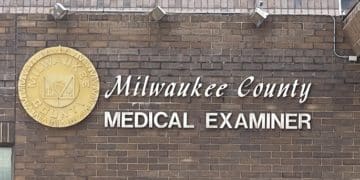MILWAUKEE, WI- The city of Milwaukee is receiving millions of dollars in federal money to help replace lead laterals and clean up tainted drinking water.
But when it comes cracking down on lead poisoning in children, the CDC and the city have different ideas on what an actionable blood lead level should be.
In November 2021, the Biden Administration signed a bipartisan infrastructure bill awarding Wisconsin $841 million dollars spread out over five years to improve the water framework across the state.
As of 2021, Milwaukee Water Works reports more than 40 percent of water lines in the city are made of lead. That’s around 67 thousand water lines.
Master plumber and owner at Milestone Plumbing Jessie Cannizzaro works on homes that have lead water service lines.
“A lot of homes throughout our area actually have lead laterals that go under their basement floor to a different location in the basement and come back up as well. So we are seeing companies addressing out in the yard getting rid of the lead. People have started to ask questions and are starting to proactively try to address their concerns in getting rid of those lead lines,” said Cannizarro.
She says if you have lead laterals, you might have lead pipes in your home too.
“If your home has the water meter, the pipe coming up to it, and then on the outlet side of the water meter it goes back underground, you likely also have lead on the interior portion serving your pipes as well.”
Cannizarro says it’s more common to have exterior lead pipes though.
But when it comes to the guidelines of what lead poisoning levels would be in children, the city and CDC disagree.
The CDC says that the actionable blood lead level in children is 3.5 micrograms per deciliter.
However, the city of Milwaukee’s actionable blood lead level in children is 5 micrograms per deciliter.
Coalition On Lead Emergency Chair Richard Diaz says those inconsistencies in actionable blood lead levels are putting children’s lives at risk.
“And for the city of Milwaukee, that would double the number of cases at 5 (micrograms per deciliter) so there would be about 3,200 cases of children who are lead poisoned testing at 3.5 or above,” said Diaz.
Click on the audio player above to hear the full story.


























